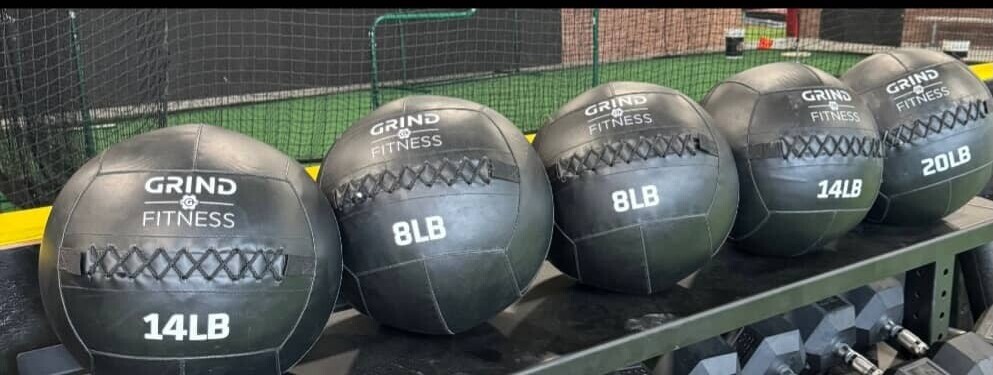In the fast-paced world of soccer, players need more than just technical skills.
To stand out on the field, soccer players must possess explosive strength, agility, endurance, and the ability to transition seamlessly between attacking and defending.
One of the most effective ways to improve these attributes is through targeted training.
Two training methods that complement each other exceptionally well are medicine ball exercises and plyometric training.
Both methods are designed to improve power, speed, and agility, which are essential for soccer players.
However, when combined, these two methods can take your training to the next level, offering enhanced results in terms of performance and injury prevention.
This article will explore how soccer players can effectively combine medicine ball exercises with plyometric training to build strength, power, and explosiveness that will be felt on the field.
What Are Medicine Balls?
Medicine balls are weighted balls used in fitness training.
They can range from a few pounds to several pounds, depending on the level of training and the exercise being performed.
The weight and versatility of medicine balls allow them to be used for a wide variety of exercises, making them a staple in many soccer players’ training routines.
What Is Plyometric Training?
Plyometric training, often referred to as “jump training,” involves explosive movements that engage fast-twitch muscle fibers, which are responsible for generating force quickly.
These exercises include jumps, hops, bounds, and sprints that help improve power, coordination, and agility—critical attributes for soccer players.
Plyometric training improves not just physical endurance but also mental resilience, as it requires players to push their limits during every set.
The Synergy Between Medicine Balls and Plyometrics
While both medicine ball exercises and plyometric drills are highly effective on their own, combining them creates a comprehensive workout routine that enhances a player’s overall fitness, agility, and strength.
Here’s how the two work together:
- Explosive Power: Plyometrics primarily focus on building explosive power in the legs, which is critical for sprinting, jumping, and changing directions quickly during a match. Medicine ball exercises, such as overhead throws or rotational throws, engage the core and upper body in similar explosive movements, helping to develop total body power.
- Core Stability: Both training methods emphasize core strength. While plyometrics work on dynamic stability (like stabilizing the body during jumps), medicine ball exercises can target the core through rotational movements or even overhead throws that require stabilization while moving.
- Speed and Agility: Combining high-intensity exercises from both categories trains the muscles to react quickly and efficiently, improving footwork and body control. By increasing the speed of medicine ball exercises (e.g., slamming or tossing), and adding plyometric drills (e.g., box jumps, lateral bounds), you engage multiple muscle groups simultaneously, making your movements faster and more efficient.
- Injury Prevention: By strengthening muscles, tendons, and ligaments through plyometric exercises, athletes can lower the risk of injuries. Similarly, medicine balls help stabilize joints and prevent injuries in soccer by strengthening muscles that support the knees, hips, and shoulders.
How Soccer Players Can Integrate Medicine Balls into Plyometric Training
Now that we understand how these two training methods complement each other, let’s dive into some key exercises that combine medicine balls with plyometric drills.
a . Medicine Ball Slams with Jump Squats
This exercise combines the explosive movement of a medicine ball slam with a jump squat, which engages the entire body and improves both power and agility.
- How to do it:
-
- Stand with your feet shoulder-width apart, holding a medicine ball above your head.
- Slam the ball forcefully onto the ground, and as you bend down to catch it on the rebound, immediately jump into a squat position.
- As you rise from the squat, explode back into a standing position, bringing the ball overhead.
- Repeat for 12-15 reps.
- Benefits: This drill works your core, legs, arms, and shoulders, helping improve explosive power, which is key to accelerating, jumping, and changing directions on the field.
b . Medicine Ball Rotational Throw with Box Jumps
Rotational throws using a medicine ball enhance core strength, while box jumps improve leg power. Combining these two exercises allows for improved agility, strength, and the ability to transition between movements quickly.
- How to do it:
-
- Stand with your feet shoulder-width apart, holding the medicine ball in both hands.
- Rotate your torso and throw the ball against a wall or to a partner (preferably on one side of your body, then the other).
- After the throw, immediately perform a box jump onto a sturdy surface, landing softly with your knees slightly bent.
- Repeat for 8-12 reps on each side.
- Benefits: This drill improves rotational power, which is critical for passing, shooting, and defending in soccer. The box jumps enhance lower body explosiveness and vertical leap.
c . Lateral Medicine Ball Toss with Lateral Bounds
This exercise integrates lateral movements, which are essential in soccer for quickly changing directions and responding to opponents. Lateral bounds target agility, while the medicine ball toss adds a strength component.
- How to do it:
-
- Stand sideways next to a partner or wall, holding a medicine ball.
- With a slight squat, explosively toss the ball to your partner or against the wall while jumping to the opposite side.
- After landing, immediately jump back to the other side.
- Continue for 10-12 reps each side.
- Benefits: This exercise enhances lateral speed, agility, and overall body control. The explosive movements help develop quick footwork and stability while the upper body gets activated by the toss.
d . Medicine Ball Overhead Throw with Plyometric Push-ups
The overhead throw builds upper body strength and power while plyometric push-ups target explosive upper body and core strength. This combination benefits players looking to increase shot power and upper body explosiveness for duels.
- How to do it:
-
- Start by holding a medicine ball overhead, standing tall.
- Throw the ball forward with as much force as possible, using a squat motion to generate power.
- As the ball rebounds or is caught by a partner, drop to the ground and perform a plyometric push-up (explode off the ground with each rep).
- Repeat for 10-12 reps.
- Benefits: This combination enhances both upper body and core explosiveness, vital for actions like shooting, passing, or battling for aerial duels.
e . Medicine Ball Russian Twists with Jump Lunges
This combination strengthens the core with rotational movements while building leg power and endurance with jump lunges. Both are highly beneficial for soccer players needing explosive power and agility.
- How to do it:
-
- Sit on the floor with your knees bent and hold the medicine ball in front of you.
- Twist your torso to one side, touching the ball to the floor, then twist to the opposite side.
- After 10-12 reps, stand up and perform jump lunges, alternating legs as you jump.
- Repeat for 3-4 sets.
- Benefits: Improves both lateral agility and core strength, helping soccer players develop better balance, body control, and explosive lower body power.
Incorporating Medicine Balls and Plyometrics into Soccer Training
When incorporating medicine ball exercises with plyometric training, it’s essential to follow a progressive training approach.
Start with lower-intensity exercises and gradually build up to more advanced movements as your body becomes accustomed to the strain.
- Warm-Up: Start with dynamic stretches, light jogging, or skipping to activate the muscles.
- Rest Periods: Allow for adequate recovery between sets (60 to 90 seconds) to avoid overtraining.
- Periodization: For optimal results, alternate between heavy strength training and plyometric-focused days. Include medicine ball exercises 2-3 times a week in your routine.
- Focus on Technique: Proper technique is paramount to avoid injury. Ensure you’re using the right form, especially when performing high-impact exercises.
Conclusion
By integrating medicine ball exercises with plyometric training, soccer players can develop the power, agility, and explosiveness required for peak performance on the field.
Both training methods focus on building strength in key muscle groups while enhancing coordination, speed, and endurance.
Whether you’re a youth player or a seasoned professional, adding these drills into your routine will undoubtedly improve your overall game.
Incorporate these exercises into your training regimen for enhanced results and watch your soccer skills reach new heights.
With consistent effort and dedication, the combination of medicine ball and plyometric training will be your secret weapon to dominating on the pitch.
” Here’s a little transparency: Our website contains affiliate links. This means if you click and make a purchase, we may receive a small commission. Don’t worry, there’s no extra cost to you. It’s a simple way you can support our mission to bring you quality content.”



2 Responses
This article does a fantastic job of highlighting the synergy between medicine ball exercises and plyometric training for soccer players. I love how the examples, like lateral tosses combined with lateral bounds, are tailored to soccer-specific movements.
It’s refreshing to see a focus on not just building explosive power but also on injury prevention. I’d be curious to know if this approach works well during the off-season or if it’s better incorporated mid-season. Great read—super practical for anyone aiming to elevate their game!
Hi Kavitha
I’m glad you found the article practical and appreciated the soccer-specific examples.
Medicine ball exercises combined with plyometrics can be a game-changer for developing explosive power while also reinforcing injury prevention strategies.
Great question about timing!
This type of training can be highly effective both during the off-season and mid-season, but the approach should be adjusted based on training goals and workload:
Off-Season: This is the ideal time to focus on maximal strength and power development since players aren’t dealing with the demands of frequent matches. Higher-intensity medicine ball and plyometric sessions can be incorporated 2-3 times a week to build a strong foundation for the upcoming season.Mid-Season: During the competitive period, maintaining power without causing excessive fatigue is key. Lighter medicine ball work and lower-volume plyometrics (once or twice a week) can help sustain explosiveness without overloading the body. Adjusting intensity based on match schedules and recovery needs is crucial.
Thanks again for your comment!